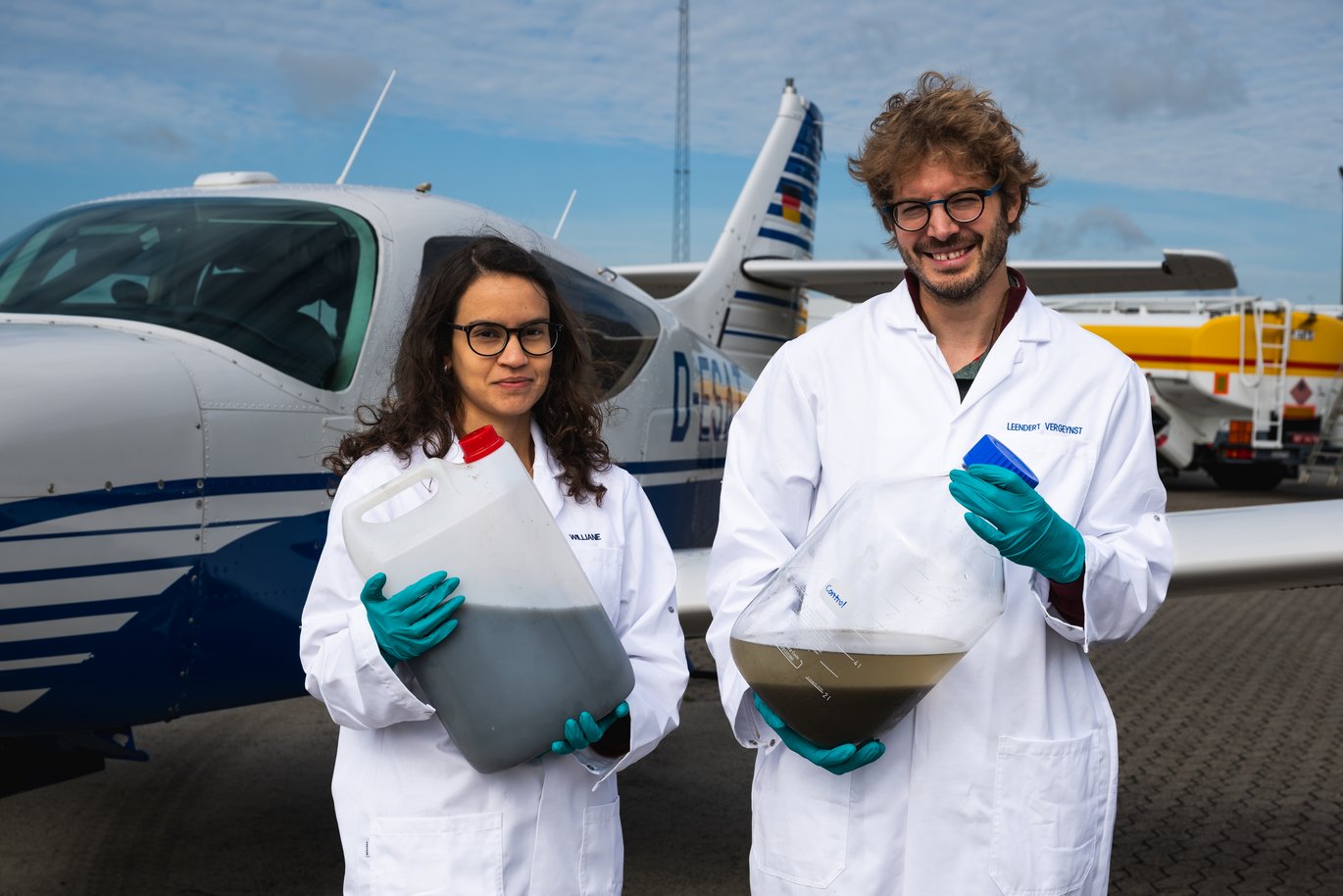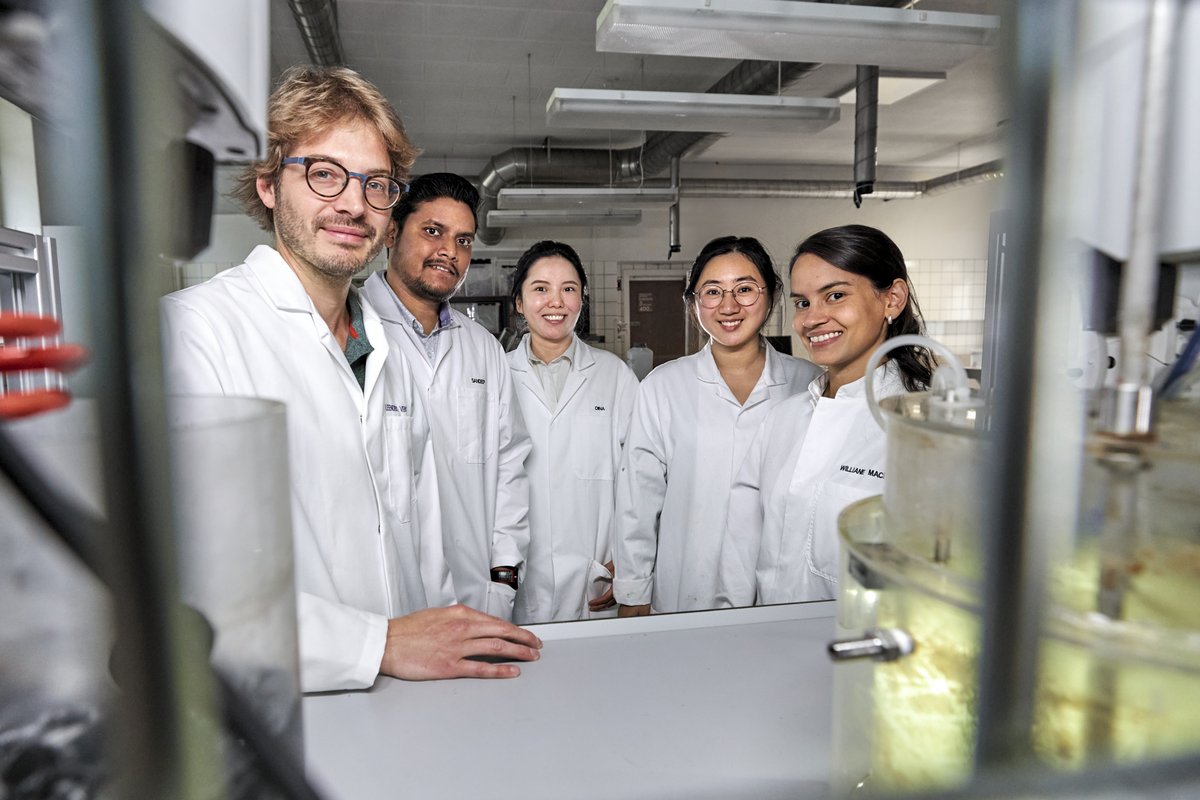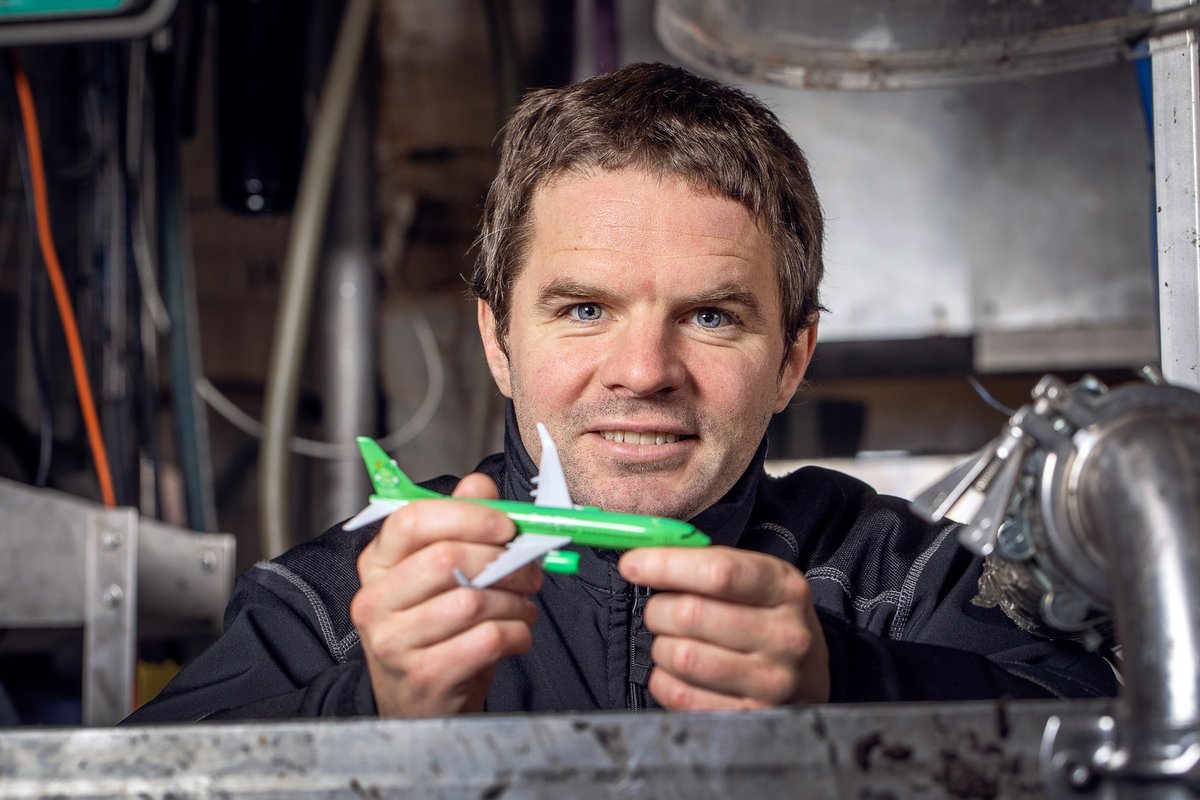From sludge to fuel: Researchers are getting ready to produce green oil in Denmark
Very soon the first green fuel will be made from the sludge in our wastewater. This is the culmination of many years of research and the first oil is planned for delivery to a refinery in Fredericia early next year.

We have been talking about it for a long time, and both Denmark's biggest funds and the EU have invested millions in developing the technology. Researchers have spent thousands of hours in their labs, and companies have begun preparing for a new Danish export venture.
But it still sounds almost too good to be true. We can convert sludge from ordinary wastewater into a potent type of oil that can replace fossil fuels in planes, ships and trucks, for example.
"The crude oil we get from the sludge is very similar to the fossil oil we already know, and it can be refined into kerosene for aviation fuel, for example. It’s a technology that could be very important for more climate-friendly transport," says Patrick Biller, associate professor at the Department of Biological and Chemical Engineering at Aarhus University.
The technology is called hydrothermal liquefaction, or HTL, and it is based on a simple principle. The sludge is heated to 325 degrees centigrade under high pressure and then biocrude oil is formed and recovered for refining into different types of fuel.
According to Patrick Biller, the technology also offers a new solution to a significant environmental problem, because it means we will not have to deposit sewage sludge on agricultural land.
"We know that, in many cases, the sludge contaminates farmland with a cocktail of heavy metals, microplastics and drug residues, and a positive side-effect of our research is that now we can avoid this," he says.
| The HTL-technology explained |
|---|
HTL stands for hydrothermal liquefaction. The process mixes organic material with water and exposes it to high pressures of 150-200 bar and high temperatures of 300-350 degrees centigrade. The result is a viscous oil that can be refined. Aarhus University inaugurated one of the world's largest HTL test facilities for biomass at AU Viborg in 2015, and researchers have since been working to optimise the process. Today, the technology is so promising that the researchers are preparing to move from pilot-scale to full-scale with a demonstration plant in Fredericia in 2024. |
The dream will become a reality in Fredericia
In the test facility located in Foulum at AU Viborg, researchers from Aarhus University can today achieve an energy return from wastewater sludge of approximately 340 percent. This means that the energy content of the finished green biocrude oil is more than three-times higher than the energy it takes to produce it, and that is no mean figure.
"Our experimental experience with converting wet waste from wastewater into fuel is very positive, so we have high expectations for the next steps, when we will demonstrate that the technology is also effective in the real world," says Patrick Biller.
Now, the researchers are waiting for the final regulatory approvals before they can move their experimental activities out of the laboratory and over to the port area in Fredericia.
Here, supported by the researchers, the startup company Circlia Nordic will install a new and larger HTL demonstration plant at the wastewater treatment plant of Fredericia. They will do so in collaboration with Fredericia Spildevand og Energi, Krüger and the Crossbridge Energy refinery. If all goes well, they will be able to realize the dream of getting planes, ships and trucks running on sludge next year.
The new demonstration plant is the size of two 40-foot containers and it can produce 1,400 tonnes of bio crude oil a year. In theory, if the researchers were given access to all the sludge from all Danish wastewater treatment facilities, it would correspond to approximately two per cent of the nation's total consumption of fossil fuels.
When the sludge has been transformed into bio crude oil, only the inorganic fraction of the sludge remains where all of the phosphorus is concentrated. We can use this concentrate as valuable fertiliser instead of spreading polluting manure and sludge or importing inorganic fertiliser from abroad.
And then there's water. Pitch black water.
Read more about a new technology to recover phosphorus from sludge
Black water
“Water makes up to 90 percent of the material that comes out of the HTL plant when it is fed with sewage sludge, and in the experiments this water was extremely polluted," says Leendert Vergeynst, assistant professor at the Department of Biological and Chemical Engineering at Aarhus University.
He researches wastewater treatment, and he did not like what he saw when he received the first water samples from the HTL project.
"It looked like black coffee and had a 100-times higher concentration of toxic organic components. We were genuinely concerned that this was a problem we wouldn't be able to solve," he says.
Leendert Vergeynst was brought to Denmark in 2019 to help solve the problem. Since then, he has built up a research group at Aarhus University that specialises in microbial water purification technologies, and together, they have been able to purify the water from the HTL facility.
“Optimising water purification technologies is about understanding the interplay between microorganisms and pollutants in the water, and having complete control over biochemical processes. This makes it possible for us to remove pharmaceutical residues, biocides, hormones and nutrients," he says.
The bacteria that feed on the mixture of nutrients and organic material in the dirty water grow quickly and become a sticky mass that has to be removed regularly. The researchers are therefore already investigating how they can use this soup of bacteria for useful purposes. For example, as new biomass in the HTL plant for conversion into more oil. Perhaps the researchers can even design processes that can get the surplus bacteria to produce bioplastic.
"We need to begin viewing polluted water as a valuable resource filled with valuable carbon compounds. We have a huge potential to make better use of the water for new and sustainable products. We hope that we’ll be able to learn much more from the full-scale project in Fredericia," says Leendert Vergeynst.

Behind the research
The project title is: Sludge2Oil and is funded by Energy Technology Development and Demonstration Program (EUDP)
Read more about the project here
Contact
Patrick Biller, lektor, Institut for Bio- og Kemiteknologi
Leendert Vergeynst, adjunkt, Institut for Bio- og Kemiteknologi

